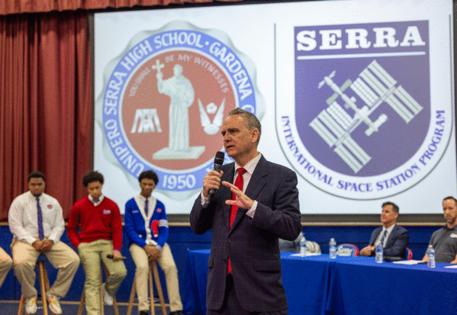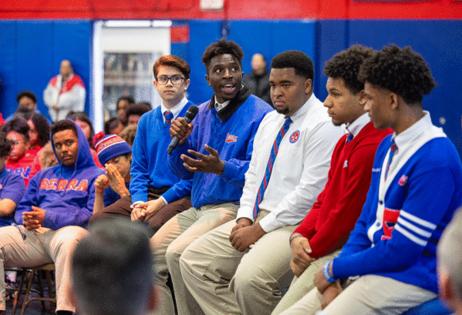Space team seeks to turn school into science destination
Published in Lifestyles
LOS ANGELES — This month, Junipero Serra High School in Gardena, California, had a pep rally to celebrate the achievements of what might be its least conventional team: its cutting-edge space squad.
Seniors Isaiah Dunn, Christopher Holbert, Travis Leonard, Anderson Pecot and Henry Toler, junior Keith Davie and freshman Jonathan Cruz walked their classmates through the 3D-printing experiment they sent into orbit on the International Space Station. Their classmates, meanwhile, did what they usually do at pep rallies — they cheered, they asked questions and, because it's a Catholic school, they prayed.
The team members aim to do more than just expand the frontier of knowledge. They're also hoping to make the school into a top place to study science.
"We get to be the pioneers," Leonard, 17, said. "We get to be the founders who started a new path for Serra students."
The team is on its second experiment conducted in the microgravity conditions of the space station. The current one was launched aboard the SpaceX Falcon 9 CRS-30 Rocket from Florida's Kennedy Space Center on March 21 and docked with the International Space Station two days later.
The experiment involves injecting a light-activated resin into a 3D printed mold of a Lego brick. The resin is then exposed to UV light to cause it to harden. The goal is to compare the physical and chemical properties of the object created in space with those of an identical object created on the ground.
Kenneth Irvine, the school's science department chair and the team's adviser, said the group used a 3D printer on campus to print the parts for the printer sent into space. "As our experiment is taking place in space, we're going to be running a parallel experiment down here."
The point of the project, said Holbert, is to one day enable the space station to 3D-print replacements for things that break on board, such a fasteners or tools, rather than having to ship them from earth.
"The goal is to get to a point where we can reliably 3D-print in space, which would save thousands of dollars per part," Holbert said.
The cost to launch an item on a SpaceX Falcon 9 rocket has dropped from $10,000 per kilogram in 2009 to somewhere between $1,520 and $2,500 now, according to Georgetown University. But that's still expensive — even sending a pair of bolts weighing a tenth of a pound each would cost between $138 and $227 to fly into space. Hence the interest in making replacements in orbit.
...continued
©2024 Los Angeles Times. Visit at latimes.com. Distributed by Tribune Content Agency, LLC.










Comments